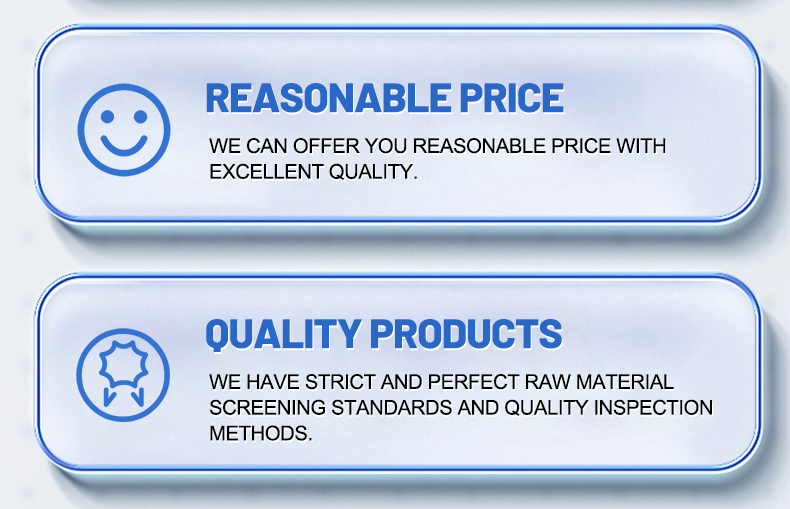

| Availability: | |
|---|---|
| Quantity: | |
High efficiency: Since the magnetic flux path is continuous and closed, magnetic leakage is reduced and conversion efficiency is improved.
Low noise: Because the iron core structure is stable, the noise generated during operation is low.
Compact size: thanks to the optimized design, the equipment is smaller and lighter.
Good heat dissipation: A reasonable core layout helps to improve heat conduction efficiency and ensure better temperature management.
Application scenarios: Unicore transformers are suitable for many occasions, such as power transmission systems, power distribution networks, industrial automation equipment, and power conversion links in various electronic devices. They are particularly suitable for applications that require high reliability and high performance.



Reduce magnetic flux leakage: By tilting the joints of the iron core, the leakage of magnetic flux at the joints can be effectively reduced, thereby improving the closure of the magnetic circuit and the working efficiency of the transformer.
Reduce noise and vibration: The traditional straight slit iron core may produce large noise and vibration due to the magnetostrictive effect during operation. The angle design can disperse the stress, reduce these phenomena, and make the transformer run more quietly and smoothly.
Improved electromagnetic compatibility (EMC): Due to the reduction of magnetic flux leakage, electromagnetic interference to the external environment is also reduced, which helps to improve the electromagnetic compatibility of the system.
Optimize the use of materials: Although the design of the Unicore may be slightly more complicated, it can make full use of materials such as silicon steel sheets, avoid waste, and ensure good mechanical strength.

1.How to choose the right corner core material?
The choice of materials depends on the operating frequency, temperature range and desired magnetic properties. Commonly used materials include silicon steel sheet, permalloy, iron-nickel alloy, etc. For high frequency applications, ferrite materials may be selected to reduce losses.
2. What are the design considerations for corner cores?
Magnetic flux density: to ensure that the iron core will not saturate, especially under high load conditions.
Loss: Consider eddy current loss and hysteresis loss to improve efficiency.
Heat dissipation: Good heat dissipation characteristics are essential to maintain stable operation.
Cost-effectiveness: Balance performance requirements with manufacturing costs.
3. What is the manufacturing process of the corner core?
The corner core can be made by punching, bending, winding and other processes. According to the specific size and requirements, the manufacturer will choose the most suitable production method.
For products with high precision requirements, laser cutting or numerical control (CNC) machining technology may also be used to ensure dimensional accuracy.
4. What is the test standard for corner iron core?
Testing standards are usually based on International Electrotechnical Commission (IEC), National Standards (GB), or other industry specifications. Test items may include insulation resistance, voltage resistance, temperature rise test, no-load current and loss measurement, etc.
High efficiency: Since the magnetic flux path is continuous and closed, magnetic leakage is reduced and conversion efficiency is improved.
Low noise: Because the iron core structure is stable, the noise generated during operation is low.
Compact size: thanks to the optimized design, the equipment is smaller and lighter.
Good heat dissipation: A reasonable core layout helps to improve heat conduction efficiency and ensure better temperature management.
Application scenarios: Unicore transformers are suitable for many occasions, such as power transmission systems, power distribution networks, industrial automation equipment, and power conversion links in various electronic devices. They are particularly suitable for applications that require high reliability and high performance.



Reduce magnetic flux leakage: By tilting the joints of the iron core, the leakage of magnetic flux at the joints can be effectively reduced, thereby improving the closure of the magnetic circuit and the working efficiency of the transformer.
Reduce noise and vibration: The traditional straight slit iron core may produce large noise and vibration due to the magnetostrictive effect during operation. The angle design can disperse the stress, reduce these phenomena, and make the transformer run more quietly and smoothly.
Improved electromagnetic compatibility (EMC): Due to the reduction of magnetic flux leakage, electromagnetic interference to the external environment is also reduced, which helps to improve the electromagnetic compatibility of the system.
Optimize the use of materials: Although the design of the Unicore may be slightly more complicated, it can make full use of materials such as silicon steel sheets, avoid waste, and ensure good mechanical strength.

1.How to choose the right corner core material?
The choice of materials depends on the operating frequency, temperature range and desired magnetic properties. Commonly used materials include silicon steel sheet, permalloy, iron-nickel alloy, etc. For high frequency applications, ferrite materials may be selected to reduce losses.
2. What are the design considerations for corner cores?
Magnetic flux density: to ensure that the iron core will not saturate, especially under high load conditions.
Loss: Consider eddy current loss and hysteresis loss to improve efficiency.
Heat dissipation: Good heat dissipation characteristics are essential to maintain stable operation.
Cost-effectiveness: Balance performance requirements with manufacturing costs.
3. What is the manufacturing process of the corner core?
The corner core can be made by punching, bending, winding and other processes. According to the specific size and requirements, the manufacturer will choose the most suitable production method.
For products with high precision requirements, laser cutting or numerical control (CNC) machining technology may also be used to ensure dimensional accuracy.
4. What is the test standard for corner iron core?
Testing standards are usually based on International Electrotechnical Commission (IEC), National Standards (GB), or other industry specifications. Test items may include insulation resistance, voltage resistance, temperature rise test, no-load current and loss measurement, etc.